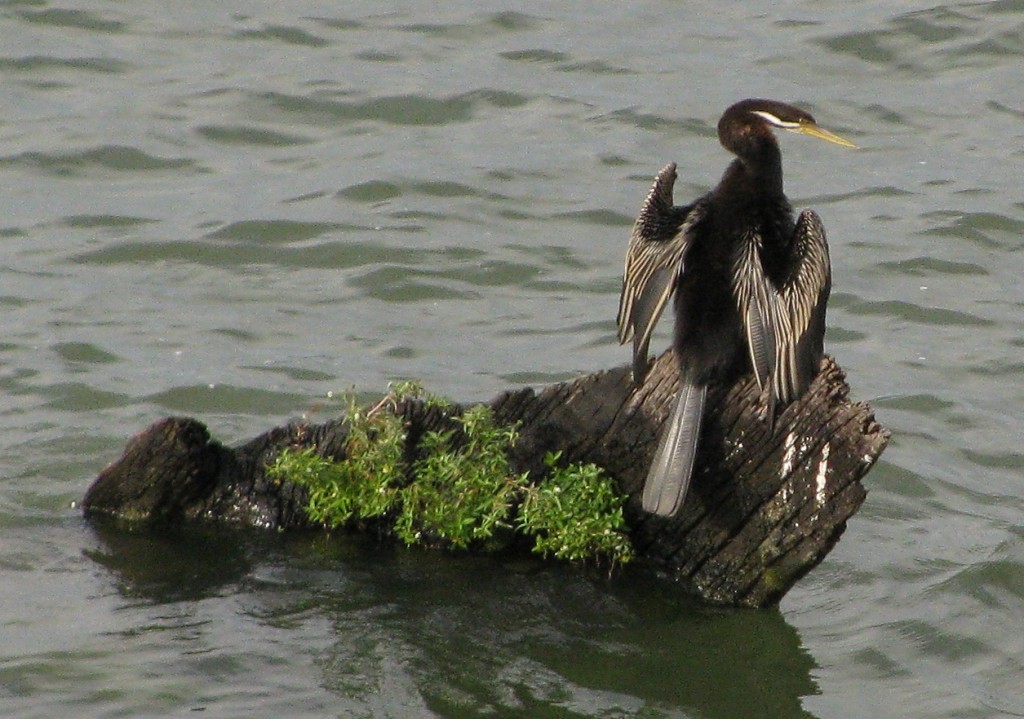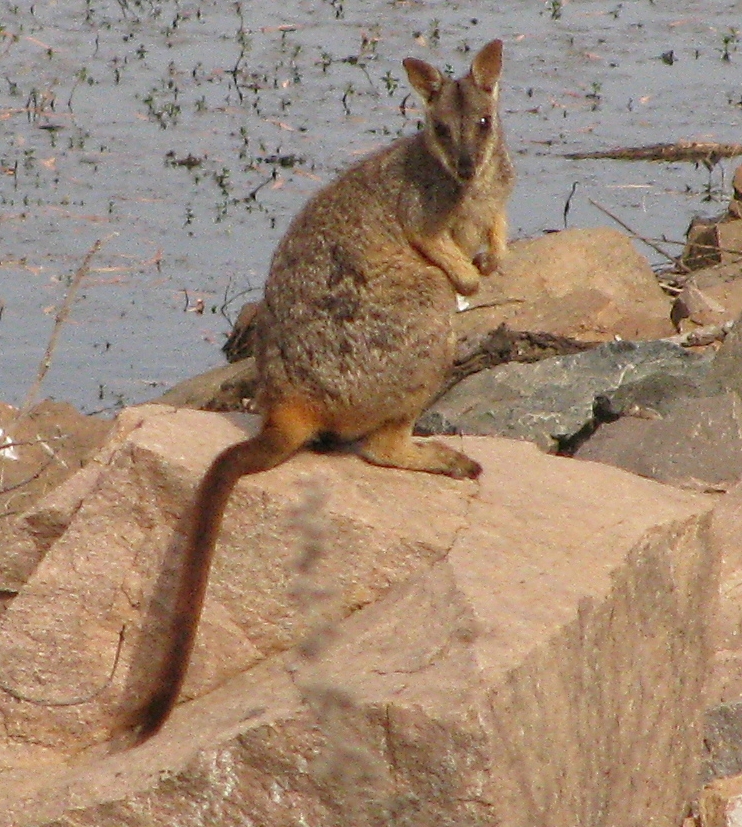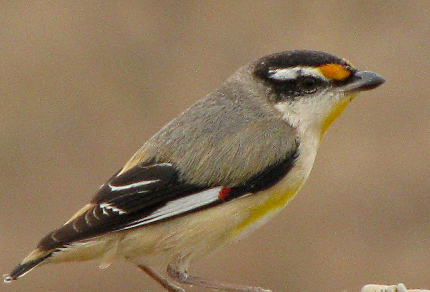
Adult Male Anhinga, Ross Lake (© Magi Nams)
Determined to begin my week with a good bash of birding, I drove to the Ross River Dam early this morning. From atop the dam near the spillways, I looked out over Ross Lake to where distant ranges of peaks disappeared in mist overhanging the far reaches of the man-made lake. A trio of black kites soared on thermals above the steep embankment, and more than a dozen pelicans floated on the grey waves of the lake like fishing boats anchored over specific fishing territories. Along the rock-buttressed shoreline, anhingas and a little pied cormorant perched on rocks and, in the case of a handsome adult male anhinga, on a piece of wood protruding from the lake. A pair of Torresian crows called out “Ah, ah!” while in flight, and a gull-billed tern wheeled in the air over my head, offering excellent views of this species I’d caught only a quick glimpse of at the Townsville Town Common Conservation Park nearly two months ago.
My birding plan for the morning (two to three hours, I estimated) included five specific areas, which meant I needed to stay on track, moving expediently from one area to another. Thus, I left the dam near the three spillways and hurried to my second station, the ford across the Ross River below the spillways. Here, the river was no more than a creek bordered by dense groves of trees that provided food and cover for spangled drongos, white-breasted woodswallows, friarbirds, honeyeaters, a grey fantail, and other woodland species. The nearby park and picnic area – Station 3 – added an assortment of birds having many different lifestyles, inlcuding additional nectarivorous honeyeaters, a predatory white ibis, and a fruit/nut-eating little corella.

Striated Pardalote (© Magi Nams)
Station 4 was the end of the paved road bordering the dam, a few kilometres past Ross Park and the spillways. As dry and dusty as any site I’ve seen, the grassy area was covered with gravel dust kicked up by heavy trucks traveling to and from the sand mine located amid the wetlands on the far side of the dam. This habitat was as far from the Ross Lake habitat as night is from day, yet the dry roadside with its dust-caked shrubs and grasses attracted golden-headed cisticolas, red-backed fairy-wrens, a striated pardalote, black-faced woodswallows, and a possible tawny grassbird, all of which conveniently perched on barbed-wire fences. I paid for that convenience by accumulating a layer of grit in my hair and on my skin and glasses from the clouds of pale dust that roiled in the wake of the trucks.

Allied Rock Wallaby (© Magi Nams)
Thankfully, Station 5 took me away from the truck route and along a stretch of the dam reaching west toward the base of Herveys Range. There I walked on the rim of two vastly different worlds – to the north, dry rangeland in shades of tawny and dust; to the south, the wetlands formed by the western reaches of Ross Lake. The latter were still blue with water, but showed marked evidence of drying, with the water having receded noticeably since my last visit five weeks ago.
The usual coterie of egrets, cormorants, anhingas, and ibises was present and accounted for, with the birds either in the water or perched in trees. Magpie geese honked nasally and loafed on a grassy bank. Black and whistling kites and a long-tailed, angle-winged black falcon – the first I’d seen – patrolled the sky over the wetland. An agile wallaby bounded down the grassy, northern side of the dam, and allied rock wallabies on the south side of the dam stared at me inquisitively from boulders buttressing the embankment, before leaping into racing bounds at the first click of my camera shutter.

Magpie Geese at Ross River Dam Wetland (© Magi Nams)
Today’s birds: mynas, magpie-larks, forest kingfishers, rainbow lorikeets, blue-faced honeyeaters, black kites, Australian pelicans, anhingas, gull-billed tern, Torresian crows, little pied cormorant, peaceful doves, white-bellied cuckoo-shrike, spangled drongos, grey fantail, white-breasted woodswallows, yellow honeyeater, great bowerbirds, pheasant coucal, noisy friarbird, leaden flycatcher, figbirds, little friarbird, brown-backed honeyeater, little corellas, straw-necked ibises, galahs, black-faced woodswallows, red-backed fairy-wrens, golden-headed cisticolas, whistling kites, striated pardalote, Australian magpie, great egrets, Pacific black ducks, intermediate egrets, magpie geese, Australian white ibises, black-fronted dotterels, *black falcon, tree martin, rainbow bee-eater, brolgas, cattle egrets, masked lapwings, possible tawny grassbird. Also saw an agile wallaby and several allied rock wallabies.(*denotes lifelist sighting)


